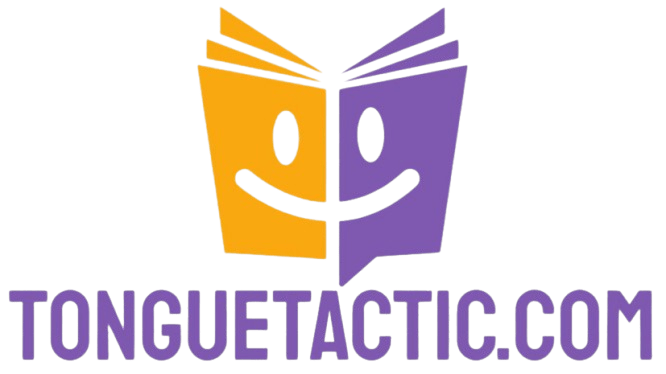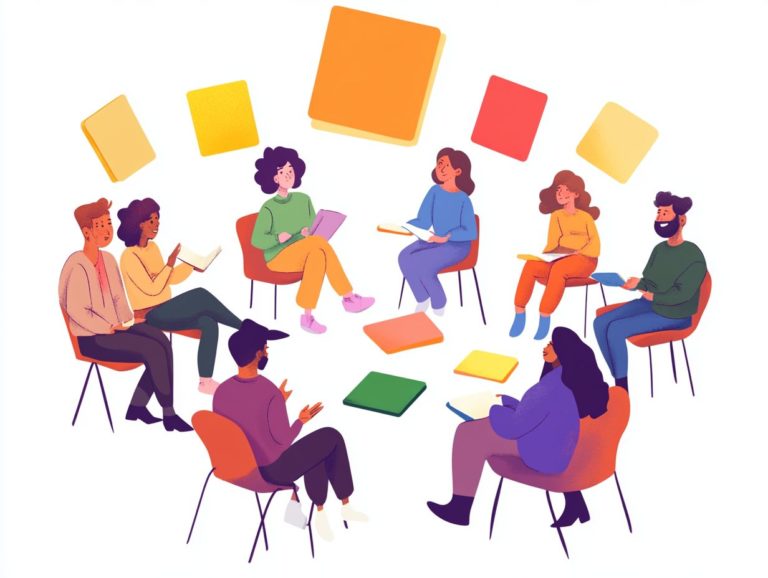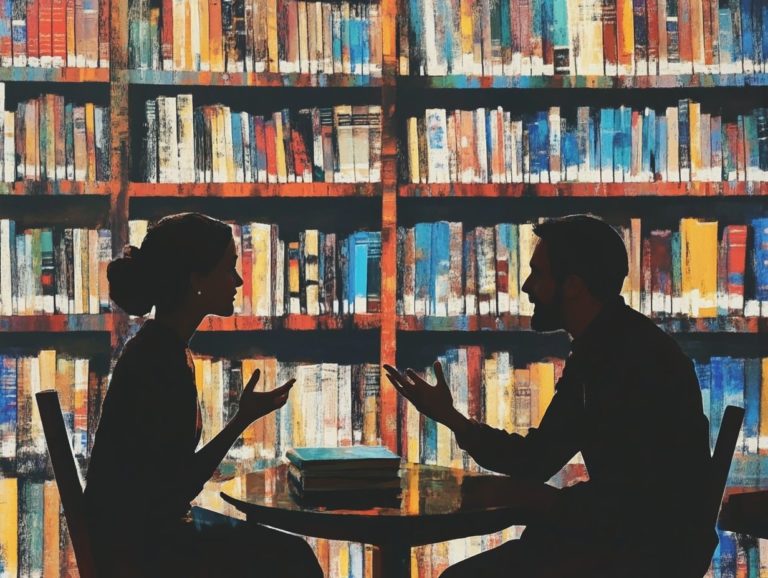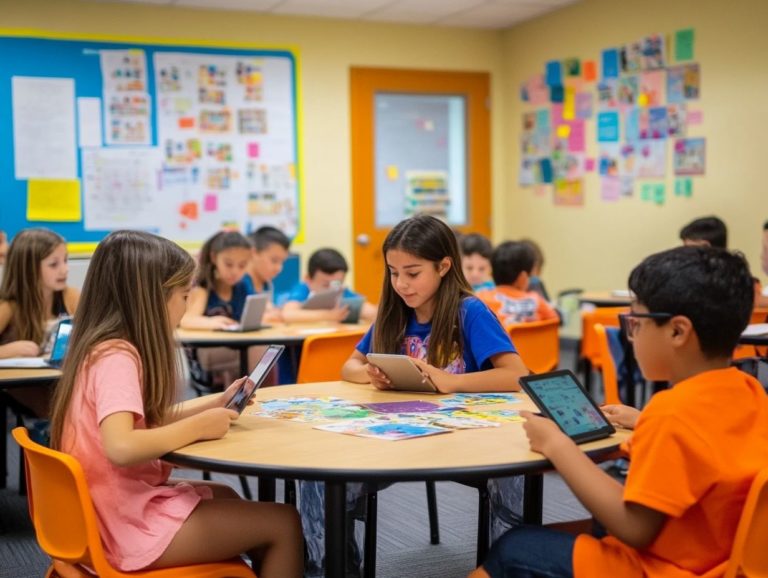using art to enhance language learning
Art and language learning may appear to be separate domains, yet their intersection can reveal a realm brimming with creativity and engagement.
By integrating art into your language education, you cultivate a deeper comprehension of vocabulary and grammar while also sharpening essential skills such as speaking, listening, reading, and writing.
This exploration delves into the benefits of weaving artistic activities into the language classroom, providing practical techniques to enliven your teaching methods, and sharing inspiring success stories that illuminate the transformative power of art in language learning.
Get ready to discover how to make language acquisition not only effective but also truly enjoyable!
Contents
- Key Takeaways:
- The Power of Art in Language Learning
- Ways to Use Art in Language Learning
- Specific Techniques for Different Language Skills
- Integrating Art into Language Curriculum
- Overcoming Challenges and Obstacles
- Success Stories of Using Art in Language Learning
- Frequently Asked Questions
- How can art be used to enhance language learning?
- How can visual aids enhance language learning?
- What creative activities enhance language learning through art?
- How does using art in language learning promote cultural immersion?
- Can art be used to teach all languages?
- How can teachers incorporate art into their language lessons?
Key Takeaways:
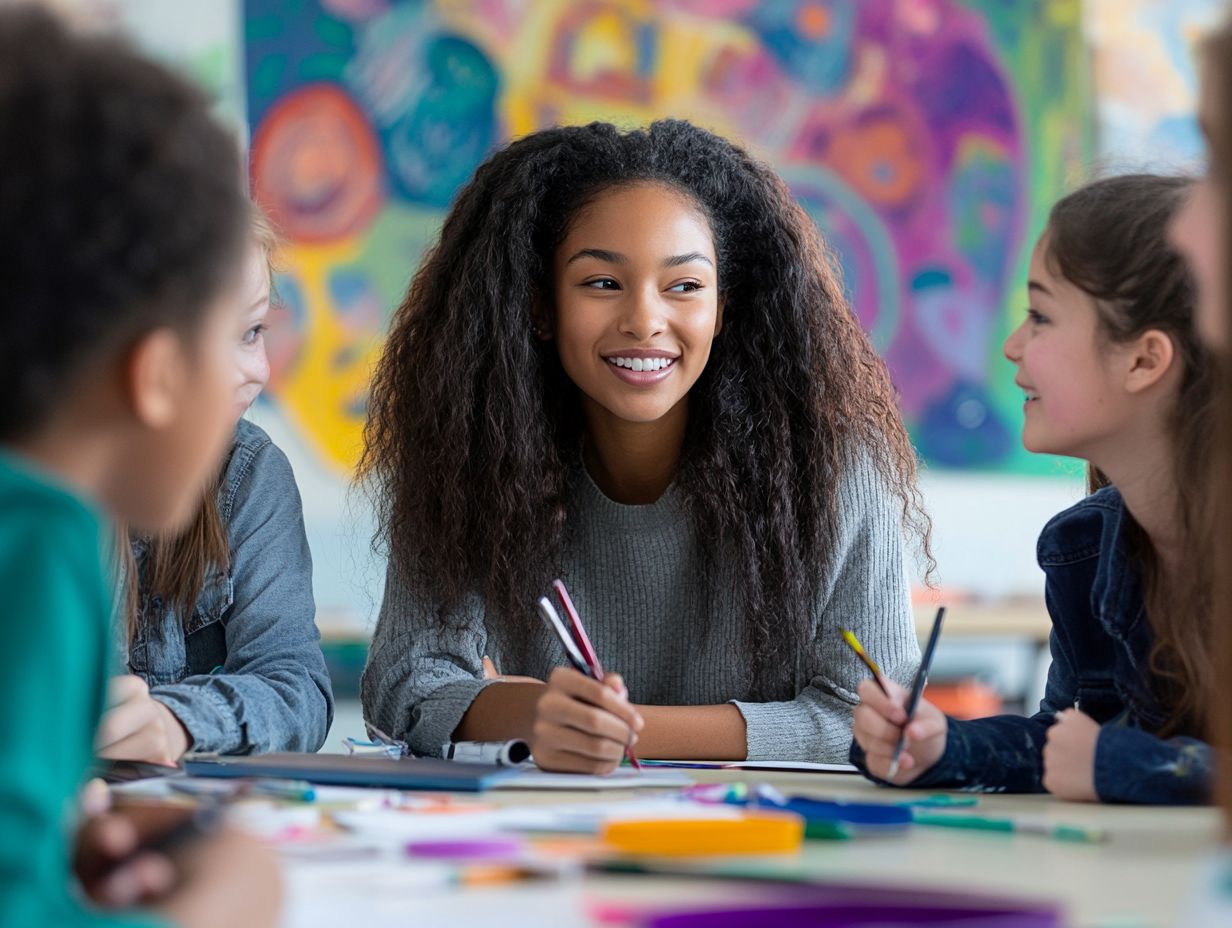
Incorporating art in language learning has numerous benefits, such as improving vocabulary, creativity, and cultural understanding. Additionally, using graphic novels for language learning can provide an engaging way to enhance skills including speaking, listening, reading, and writing through creative activities like drawing or role-playing.
Integrating art into the language curriculum can be easily achieved with practical tips and strategies, and has proven to be successful in real-life examples and testimonials.
The Power of Art in Language Learning
Integrating art into language learning offers a varied approach that not only enriches your vocabulary but also nurtures your expressive language skills.
By incorporating visual arts, you can engage with content in diverse settings, including using mobile devices for language learning, effectively bridging knowledge gaps and enhancing your overall educational experience.
This methodology gives you the power to delve into cultural awareness while fostering critical thinking, transforming the journey of second-language acquisition into a dynamic and effective process.
Benefits of Incorporating Art in Language Learning
Incorporating art into your language learning journey offers a wealth of benefits. For instance, using music to enhance language immersion heightens engagement and improves language development through visual stimulation and context-based exploration.
This approach enhances vocabulary retention as you visualize and interact with words in their natural context, boosting motivation and transforming the learning experience into something enjoyable and memorable.
The aesthetic appreciation gained from exploring various artistic forms can deepen your understanding of the cultural nuances woven into the language.
These advantages work in harmony to elevate your educational outcomes, empowering you to reach higher levels of language proficiency.
They also encourage collaboration among your peers, allowing for the sharing of interpretations and insights that enrich your collective understanding and experiences.
Ways to Use Art in Language Learning
You can explore a wealth of creative methods for integrating art into language learning. Consider engaging in interactive activities with mobile devices or embarking on virtual museum excursions that spark insightful discussions about art and enhance your understanding of cultural contexts.
Creative Activities and Exercises
Creative activities and exercises that blend art with language skills can transform traditional learning into an enriching journey. This encourages both expressive language and visual exploration, and using humor to improve language learning can further enhance this experience.
By incorporating captivating visual art projects that align with vocabulary themes, you facilitate a deeper understanding and retention of language concepts.
Utilizing multimedia content to narrate stories allows you to appreciate diverse perspectives and enhances your storytelling abilities in the process.
Engaging in the visual exploration of historical artworks broadens your artistic horizons and enriches your comprehension of context and culture.
This integration of the arts fosters an interactive environment where you’re motivated to articulate your thoughts and feelings, ultimately leading to a more dynamic and enriching educational experience.
Specific Techniques for Different Language Skills
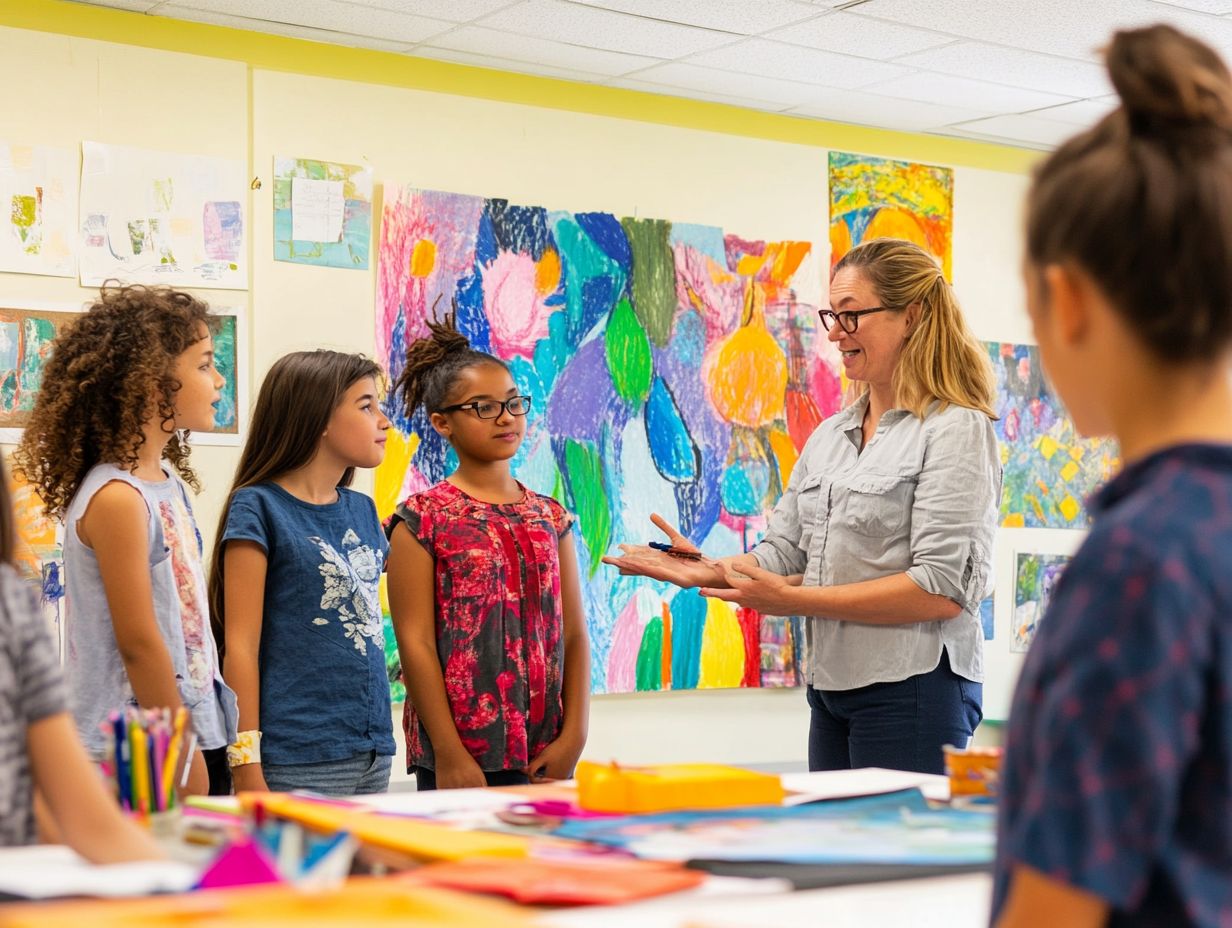
To effectively harness the power of art in your language learning journey, consider employing specific techniques that enhance your speaking, listening, reading, and writing skills.
This approach will not only enrich your experience but also significantly elevate your overall language proficiency.
Improving Speaking, Listening, Reading, and Writing
Enhancing your speaking, listening, reading, and writing skills using art in learning is about critical thinking and creating an effective learning environment.
Participate in activities like group art critiques, where discussions help you articulate your thoughts clearly. These interactive sessions enhance your speaking and listening skills while encouraging you to consider various perspectives.
Diving into art literature can significantly boost your comprehension and analytical abilities, making complex concepts easier to grasp.
Reflective writing assignments centered on your interpretations will deepen your understanding of both the creative process and critical evaluation of artistic expression.
This holistic approach enriches your learning experiences, emphasizing the interconnectedness of disciplines and promoting intellectual growth.
Integrating Art into Language Curriculum
Using art in your language curriculum requires thoughtful planning and practical strategies that enhance your educational approach.
By doing this, you ensure that art becomes a powerful teaching tool, effectively supporting diverse learning environments.
Practical Tips and Strategies
Practical tips for integrating art into your language learning involve innovative classroom approaches that utilize mobile-assisted language learning (MALL) and technology to elevate your experience.
Utilizing mobile apps designed for art-based assignments engages you with visual media on a deep level while refining your language skills. Online discussions about various art forms create an inviting platform for sharing thoughts and interpretations, enhancing your vocabulary and critical thinking.
Curating a resource bank of digital art, from contemporary works to historical masterpieces, opens a world of diverse artistic expressions for you to explore. This fosters appreciation for art and connects these experiences to your language development journey.
Overcoming Challenges and Obstacles
Overcoming challenges in integrating art for language learning requires addressing common concerns directly.
This includes maintaining student engagement while ensuring effective language development, despite knowledge gaps.
Addressing Common Concerns
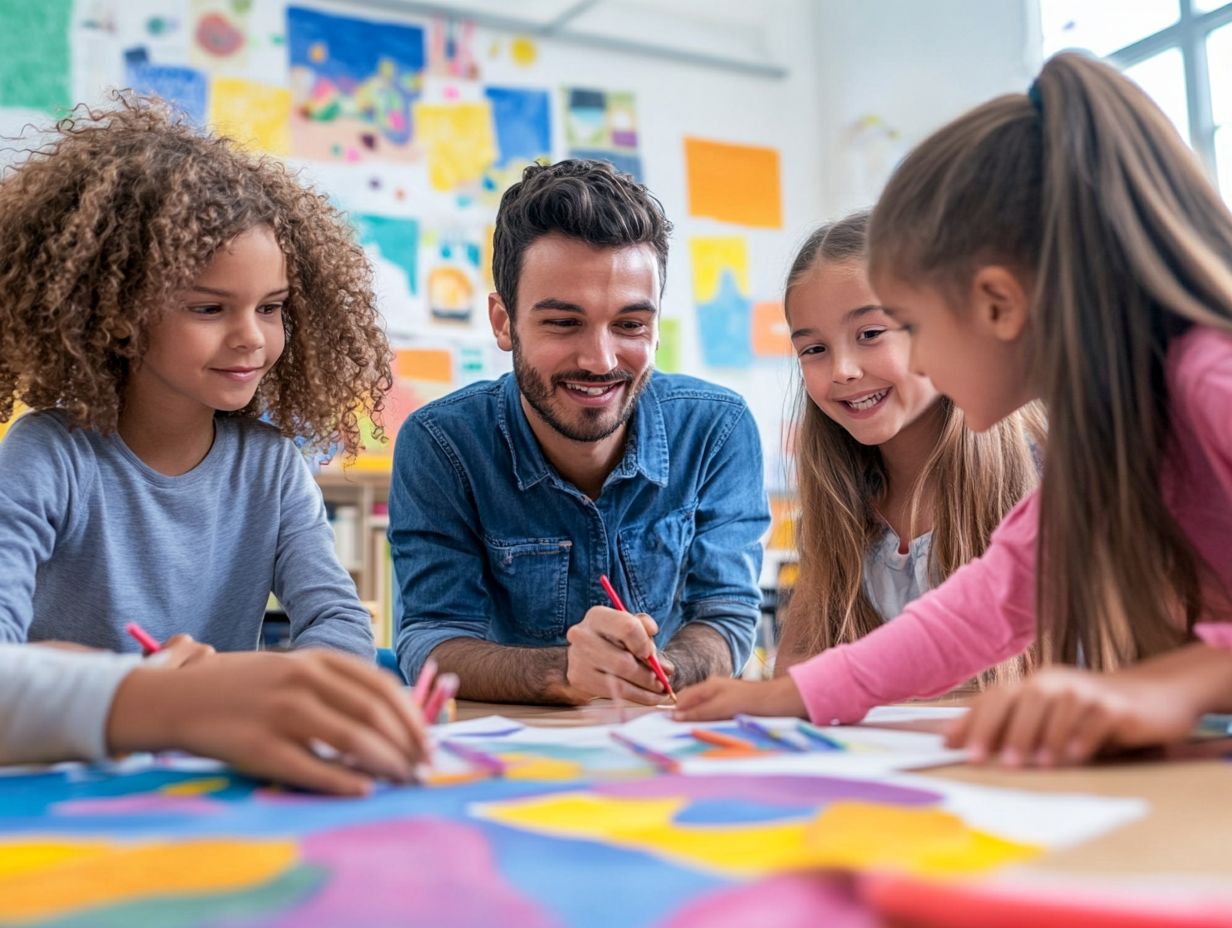
Addressing concerns about using art in language learning involves recognizing the potential benefits for student engagement and language proficiency through a well-crafted approach.
You might worry that introducing artistic elements could stretch your lesson plans too thin, possibly compromising content coverage. However, research shows that incorporating visual arts, music, and drama can ignite a deeper interest in language, making lessons more memorable and impactful.
Encouraging students to express themselves through creative mediums motivates them and helps them retain new vocabulary and grammar. This synergy enhances the learning environment and fosters critical thinking and collaboration.
Ultimately, it creates a dynamic educational experience that marries creativity with rigorous language acquisition.
Success Stories of Using Art in Language Learning
Success stories highlighting the integration of art into language learning provide compelling evidence of its transformative effects on educational outcomes.
These narratives showcase real-life examples and testimonials from educators and students who have thrived through the synergy of collaborative writing and visual thinking strategies.
Discover the joy of combining art with your learning journey! These experiences enhance engagement and deepen understanding and creativity in the learning process.
Real-Life Examples and Testimonials
Real-life examples and testimonials from language learners reveal the remarkable benefits of art education. These stories showcase how art can elevate student engagement and lead to effective learning outcomes through using mobile apps for learning languages.
For instance, a high school teacher discovered that integrating digital art projects into language instruction piqued students’ interests. It provided them with a platform to express their thoughts creatively. One student exclaimed, “Using colors and shapes made vocabulary fun! I remembered better because it was enjoyable, not just memorization.”
At the university level, another student shared how collaborative art workshops created an environment where peers could practice speaking freely. This experience boosted both their confidence and fluency.
These experiences highlight the transformative power of art-based methods. They demonstrate that art not only enhances language acquisition but also fosters deeper connections among learners.
Frequently Asked Questions
How can art be used to enhance language learning?
Art can enhance language learning in various ways, such as through pictures, creative activities, and cultural immersion. By using art to enhance language learning, students engage with the language in a more hands-on and interactive manner, making learning enjoyable and effective.
How can visual aids enhance language learning?
Visual aids, such as photographs, paintings, and drawings, provide students with a better understanding of the language they are learning. By using images that depict vocabulary words, students can associate words with visual representations, helping them retain information more effectively.
What creative activities enhance language learning through art?
Creative activities like drawing, painting, and crafting allow students to express themselves in the language they are learning. These activities promote active learning and serve as a valuable form of language practice and reinforcement.
How does using art in language learning promote cultural immersion?
Incorporating art from different cultures into language lessons helps students gain a deeper understanding of the culture associated with the language. This approach allows them to develop a more comprehensive grasp of the language and its nuances.
Can art be used to teach all languages?
Yes, art can be used to teach all languages. While some languages may have a stronger connection to specific art forms, like calligraphy for Chinese or dance for Spanish, any language can benefit from art as a tool for enhancing and reinforcing learning.
How can teachers incorporate art into their language lessons?
Teachers can incorporate art into language lessons by using visual aids, engaging in creative activities, and promoting cultural immersion. They can encourage students to create their own art pieces using the language they’re learning or engage with art from different cultures and languages.
